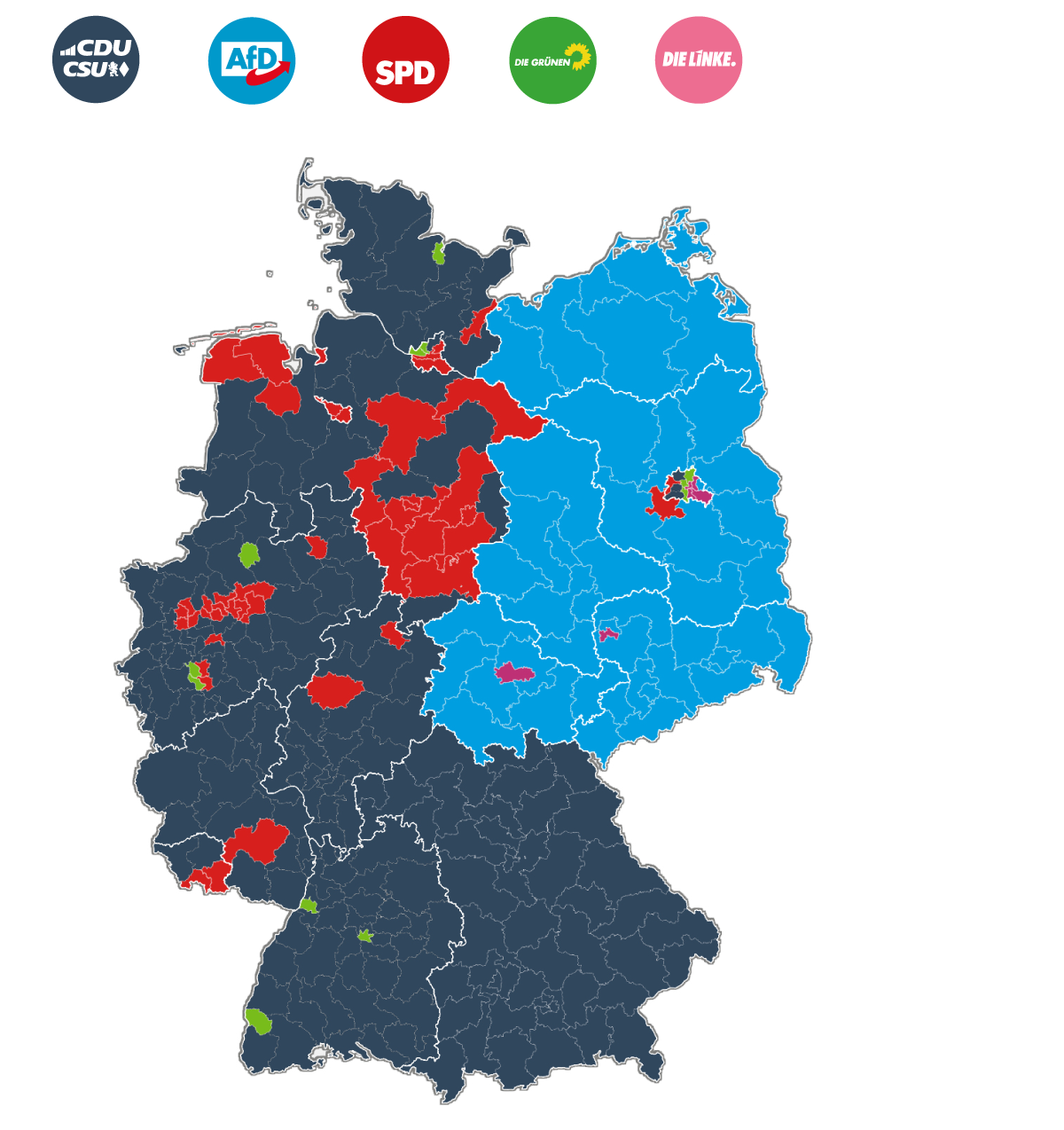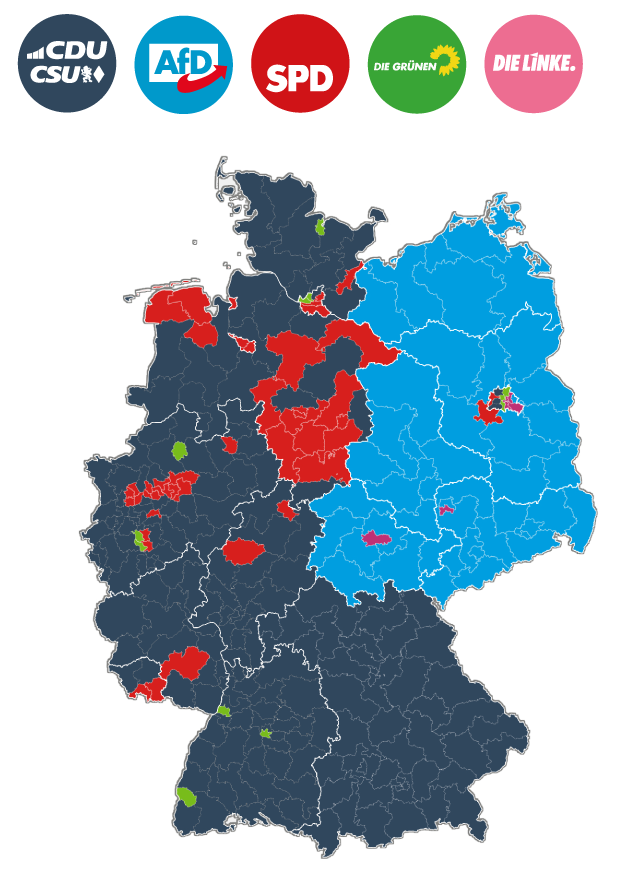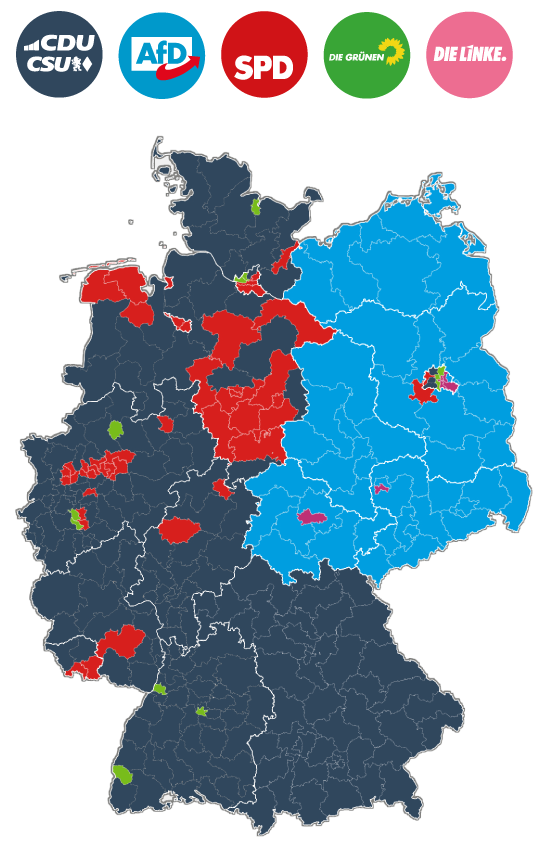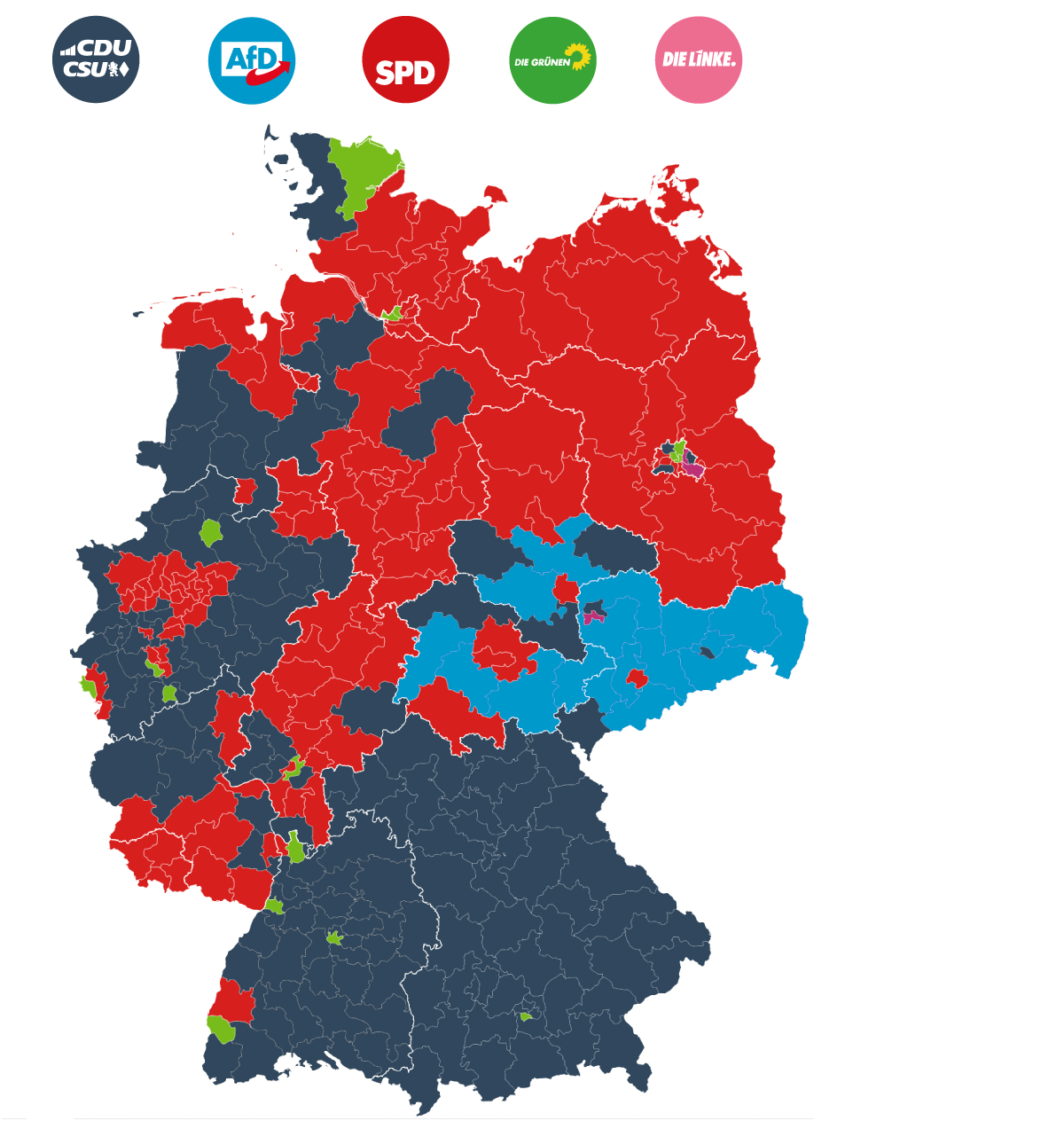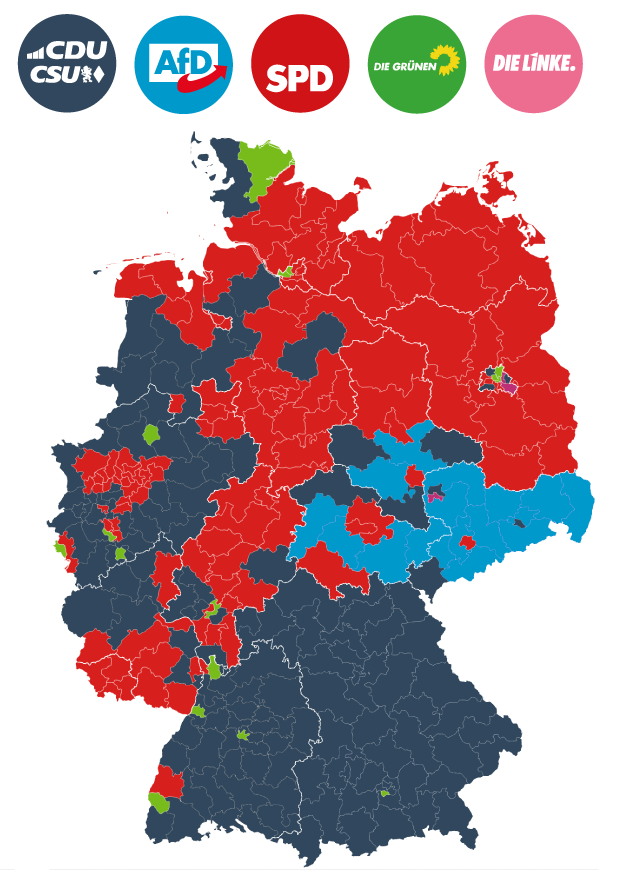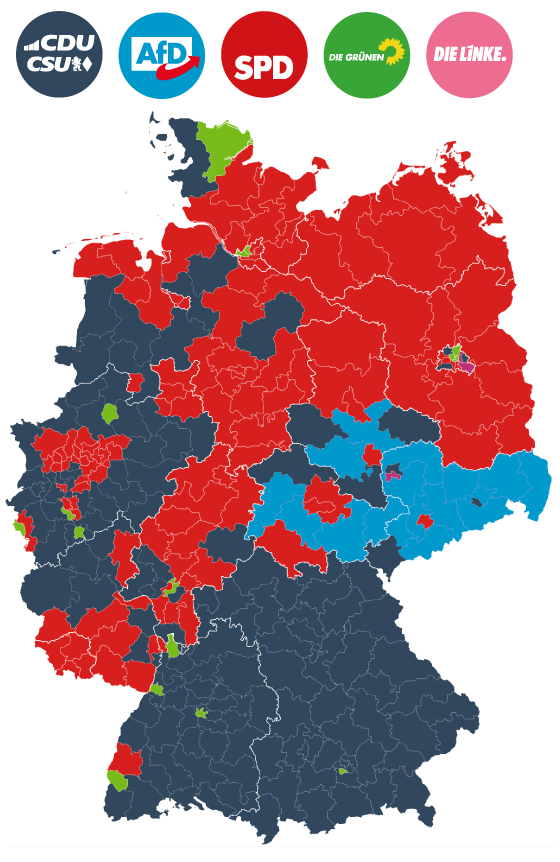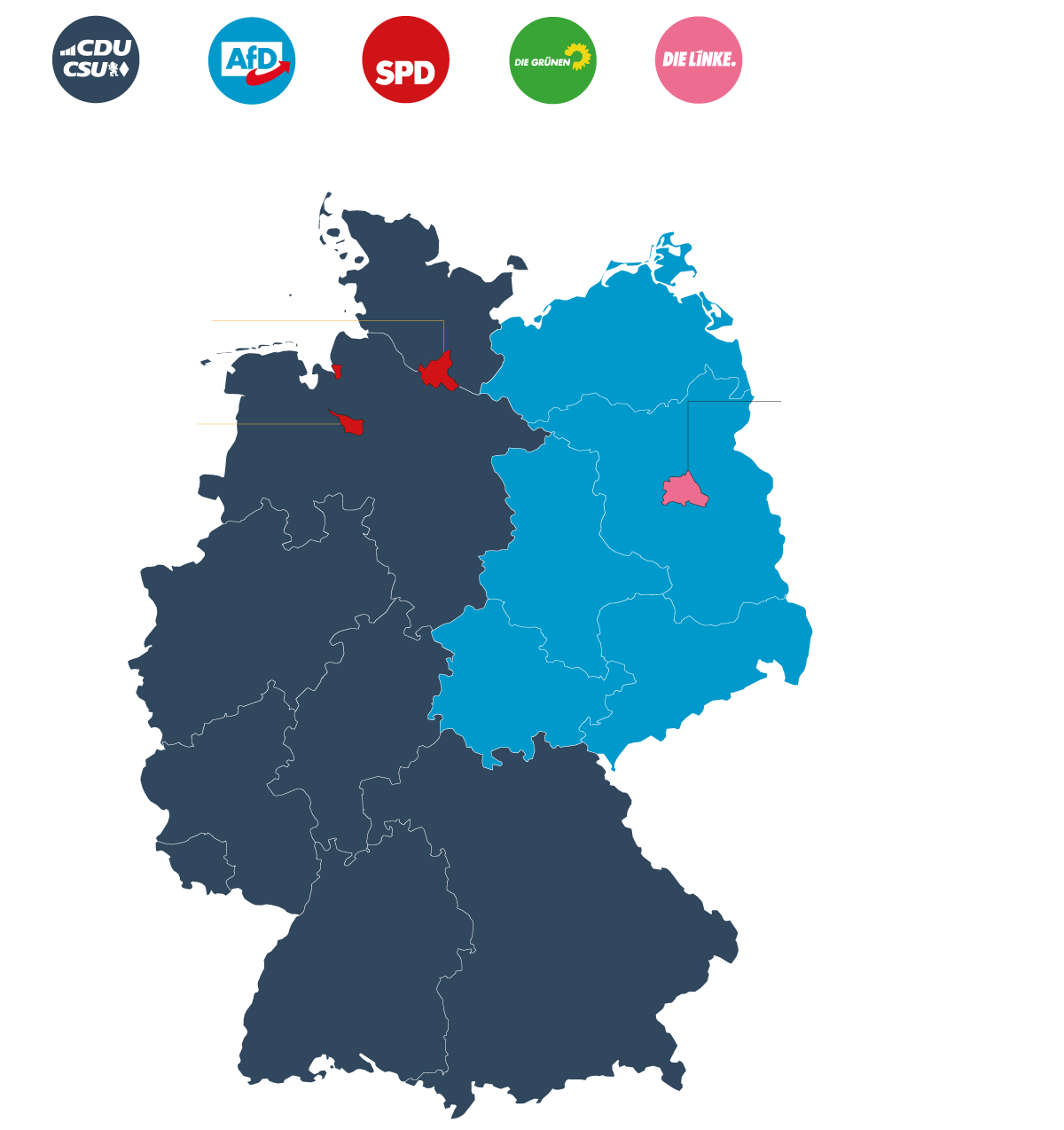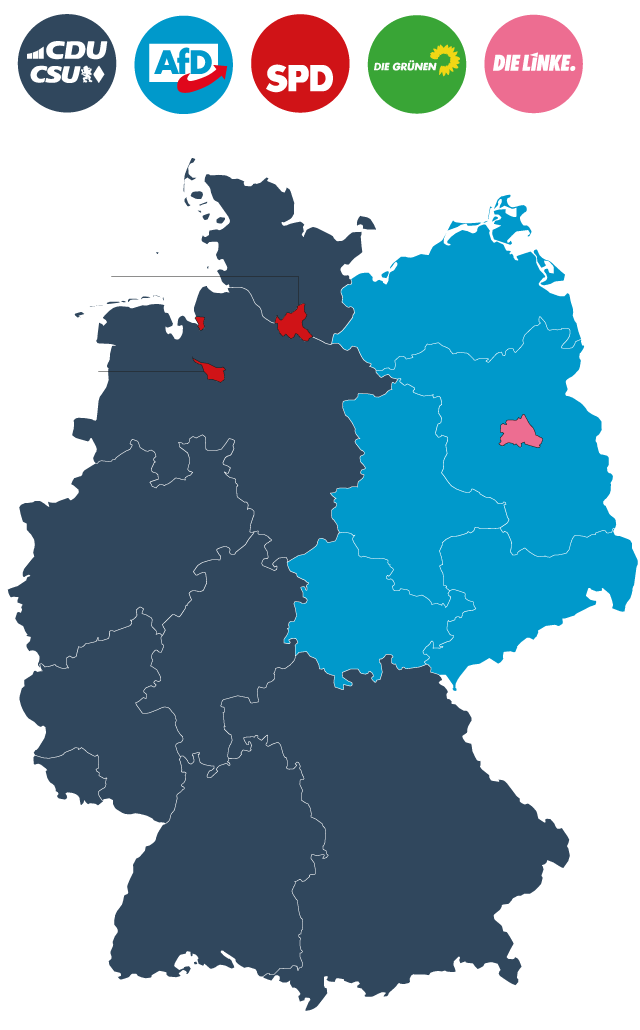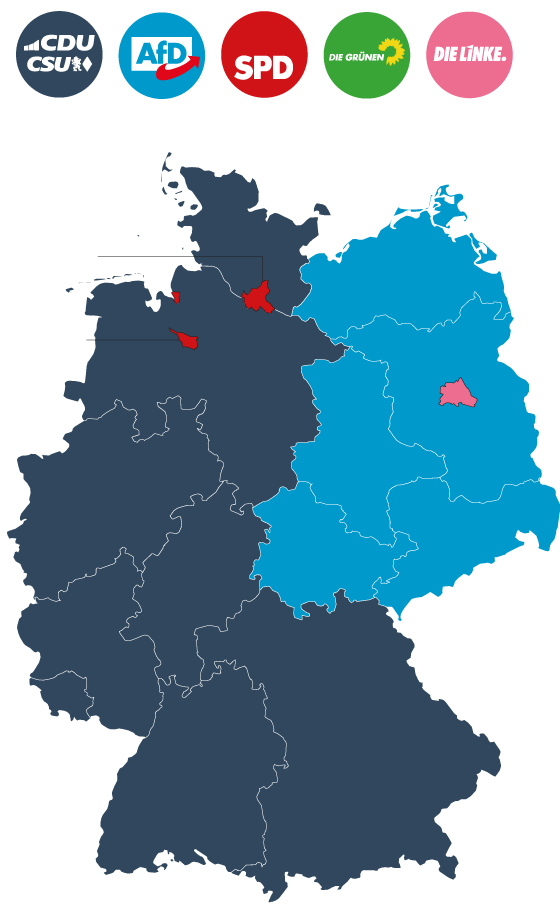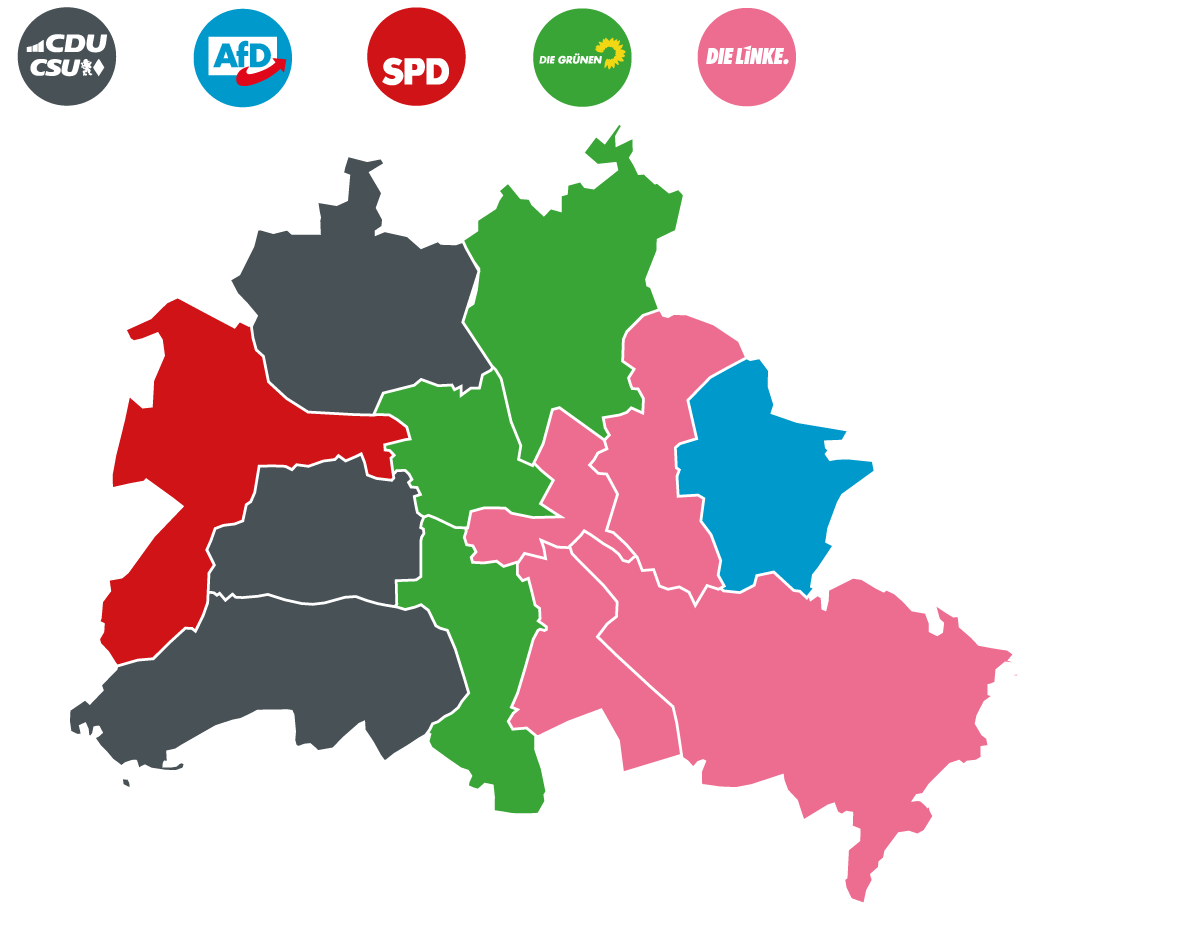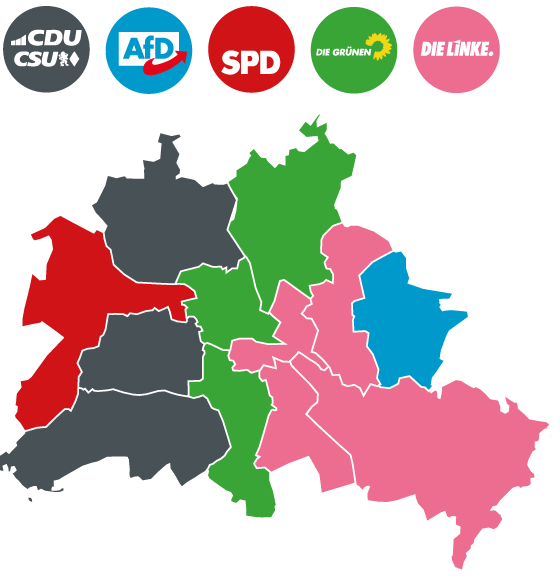Maps explaining the elections in Germany
The blue of the extreme right is expanding and gaining ground in the former East Germany

BarcelonaThe elections on Sunday draw a very different political map of Germany than four years ago. The decline of Olaf Scholz's Social Democrats (SPD) and the rise of the far-right Alternative for Germany (AfD) are two common facts throughout Germany, but there are some places where the populist and xenophobic force of Alice Weidel has imposed itself with more than 36% of the 8% of the votes.
The extreme right has not only doubled its percentage of votes and has become the second force at the federal level, but has also expanded its dominance throughout the territory and has established itself as a winning force throughout Eastern Germany. Of the 299 German electoral districts or constituencies, the conservatives of the CDU-CSU, led by Friedrich Merz, have won in 190 and their grey colour now occupies most of the electoral map. The SPD's red has fallen to just 45 districts, one less than the far-right AfD won.
Four years ago, the AfD won 17 electoral districts (concentrated in two states, Thuringia and Saxony), and in 2025 it won 46 districts, becoming the leading force in three more states. The far right has thus won in all five states that made up the former German Democratic Republic (GDR).
Across the north-east of the country, the blue of the AfD has replaced the red of the SPD, which won these regions and much of central Germany in the elections four years ago in 2021. The defeat of the party of the current chancellor Olaf Scholz is widespread throughout the country: of the 120 districts it won in 2021, only 45 remain, less than half. Most have gone to the CDU-CSU coalition, except in eastern Germany.
Voting by region
Looking at the state level, the far right has gained ground in all five of East Germany's states. However, in the midst of this region, Berlin stands out as the only stronghold of Die Linke's left in the entire country. The Social Democrats have only won the two smallest states (Bremen and Hamburg), and the conservatives dominate everywhere else.
The vote in Berlin
The capital of the country has given the only victory to the left of Die Linke, but if we analyse it by districts the results are more evenly distributed and even in the east of the city, in the district of Marzahn-Hellersdorf, the AfD has also won. The districts in the centre have opted for the Greens and only one district has opted for the Social Democrats, who in 2021 won in four.
At the federal level, the winner was Friedrich Merz, leader of the conservative CDU-CSU coalition, with 28.5 percent of the vote, and the far-right AfD doubled its results to 20.7 percent of the vote, giving it second place, followed by the SPS with 16. The liberals, who formed a coalition government with the SPD and the Greens in the last legislature, were left out of parliament, but have already announced that they will go through the results with the intention of finding the few thousand votes they need to reach the minimum threshold, so the distribution of seats could change.
How did the Germans vote?
German pensioners are the most in favour of the Grand Coalition, because they have voted the most for both the CDU-CSU – in the first place – and the SPD. The age group that has voted the most for the far right has been the 35 to 44 age group, with 26% of their votes. In fact, when broken down by age group, it is clear that the AfD vote is mainly young: it is the party that receives the most votes from Germans between 25 and 44 years old. Among voters aged 18 to 24, it also receives 21% of the votes, but in this group the most voted option is the left-wing Die Linke.
As in many other countries, German men vote more for the right than women. Although the conservative CDU-CSU is the most voted party in both cases, there is a difference of seven percentage points in the case of the vote for the extreme right: 24% of men voted for it compared to 17% of women.
